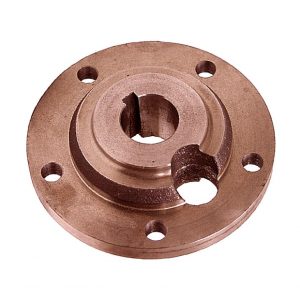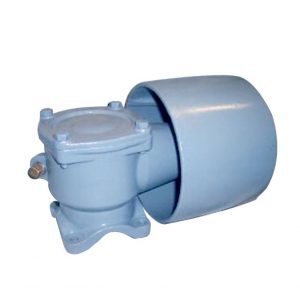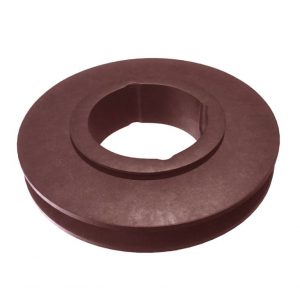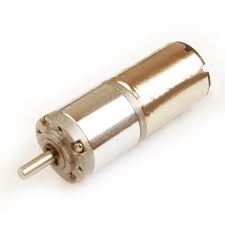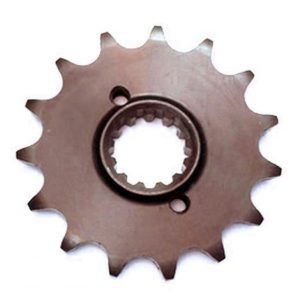Product Description
Welcome to explore our range of conveyor rollers tailored to various standards, diameters, lengths, and types.
We take pride in producing high-quality solutions that meet your specific needs. Don’t hesitate to reach out to us with your requirements and let us exceed your expectations.
Product Description
| Description | Fabrication Services flat belt idler pulley for belt conveyor |
| Application | Used in electric power, metallurgy,mine,coal, cement,steel,chemical, port, hydroelectric power and grain industries |
| Pipe/Tube/Shell | 1)Material:Q235 Steel |
| 2)Diameter:30cm-300cm | |
| 3)Length:500mm-5000mm,depends on the belt width of the conveyor | |
| Shaft/Axis | Material:#45 Steel |
| Bearing | Big roving crack, deep groove ball with double sealing |
| Welding | Pipe and bearing housing with automatic welding |
| Surface | Smooth steel color surface, rubber lagging surface |
| Color | Red,green,blue or as require |
| Service life | More than 30,000 hours |
| Standard | GB,ISO,DIN,CEMA,JIS |
Feature of belt conveyor drive drum for conveyor
1. Steady running, reliable quality and reduce maintenance;
2. Less movement longitudinally, rotating smoothly, extends the life span;
3. Various bearing housing and sealing structure are available for the customers choice;
4. Multipass labyrinthine sealing,preventing the mixed dirt and water immersed;
5.Manufacturing by steel pipe specially for of high precision roller, ensuring the strong load,
low shaking and less noise.
Our Advantages
Our Advantages:
- Experienced manufacturer specializing in electric rollers.
- ISO9001 certified company located in the mechanical and electrical capital of China.
- Products have obtained safety mark certificates and explosion-proof certificates.
- Advanced equipment and precision production capabilities.
- Successfully applied products to large state-owned enterprises.
- Committed to customer satisfaction and continuous improvement.
HangZhou Xihu (West Lake) Dis. Machinery Co., Ltd. is a manufacturer mainly engaged in the production of electric rollers. Our company is located in the HangZhou area of ZheJiang Province, and our series of products such as electric rollers are of high quality and affordable.
Welcome to consult and purchase.
HangZhou Xihu (West Lake) Dis. Machinery Co., Ltd. is located in the famous mechanical and electrical capital of China – Xihu (West Lake) Dis.. Our company has passed the ISO9001 quality system certification, and the electric drum is the first in the industry to obtain the safety mark certificate and explosion-proof certificate for mining products. We have advanced equipment for casting, forging, welding, heat treatment, chemical analysis type experiments, and have introduced a batch of precision production equipment and testing equipment such as CNC gear grinding machines, CNC boring and milling machines, worm grinding machines, and carbon nitrogen co infiltration furnaces.
Our products have been successfully applied to large state-owned enterprises such as GHangZhouba Group, CHINAMFG Petrochemical, CHINAMFG Oilfield, Xihu (West Lake) Dis. Mining Group, Shougang, Hangang, Taigang, Jigang, Yigang, and Baosteel Group.
The company always adheres to the development measures of emphasizing both introduction, absorption, and research and development, and continues to adhere to the business philosophy of “building a city with integrity”. With customer satisfaction as the center, continuous improvement as the driving force, and the unremitting efforts of all employees, we provide users with satisfactory products and services.
We are all sincere and virtuous, and we strive for CHINAMFG and success!
For more details, please feel free to contact us!
Certifications
FAQ
Q1. Are you a manufacturer?
A. Yes, we have been manufacturing and selling conveyor belts for 20 years.
Q2. Can you produce belts of my own brand?
A: Yes, we can.
Q3. What about the lead time?
A. 1) Sample 5~14 days 2) 15~30 days according to the order quantity
Q4. What are the payment terms?
A. We prefer T/T, 30% of the order is prepaid, and the remaining 70% is paid before shipment
Q5. How do you guarantee product quality?
A. 1) R&D center with independent design and development capabilities 2) We have an independent testing laboratory with full performance testing capabilities for conveyor belts.
We can test various materials, rubber, fabrics, semi-finished products and finished products.
/* March 10, 2571 17:59:20 */!function(){function s(e,r){var a,o={};try{e&&e.split(“,”).forEach(function(e,t){e&&(a=e.match(/(.*?):(.*)$/))&&1
| Material: | Aluminum Alloy |
|---|---|
| Surface Treatment: | Baking Paint |
| Motor Type: | Frequency Control Motor |
| Installation: | Slope |
| Warranty: | 1.5 Years |
| Machinery Test Report: | Provided |
| Samples: |
US$ 300/Piece
1 Piece(Min.Order) | |
|---|
| Customization: |
Available
| Customized Request |
|---|
Can you explain the concept of “efficiency” in pulley systems?
In pulley systems, efficiency refers to the ratio of output work or power to the input work or power, taking into account any losses or inefficiencies in the system. It represents how effectively the pulley system converts the input energy into useful output energy.
The efficiency of a pulley system can be affected by various factors, including friction, mechanical losses, and the design and condition of the pulleys and ropes. Here are some key points to understand about efficiency in pulley systems:
1. Mechanical Advantage and Efficiency: Pulley systems can provide a mechanical advantage by reducing the effort force required to lift a load. However, it’s important to note that while a higher mechanical advantage generally means less effort is needed, it may also result in lower efficiency. This is because as the mechanical advantage increases, the system may experience higher frictional losses and other inefficiencies.
2. Friction and Efficiency: Friction plays a significant role in the efficiency of pulley systems. The interaction between the pulley wheels and the ropes or belts can result in frictional losses, which reduce the overall efficiency of the system. Friction can be minimized by using pulleys with low-friction bearings or by lubricating the contact surfaces.
3. Rope or Belt Material: The choice of rope or belt material can impact the efficiency of a pulley system. Different materials have varying coefficients of friction, flexibility, and durability, which can affect the overall efficiency. For example, using a rope or belt with low friction and high strength can help reduce energy losses and improve efficiency.
4. Pulley Design and Condition: The design and condition of the pulleys also influence efficiency. Pulleys should be properly aligned, have smooth surfaces, and be free from damage or wear. Misaligned or worn pulleys can increase friction and decrease efficiency.
5. System Load: The efficiency of a pulley system can vary based on the magnitude of the load being lifted or moved. Higher loads can result in increased friction and mechanical losses, leading to lower efficiency.
Efficiency is typically expressed as a percentage, with 100% representing a perfectly efficient system where all the input energy is converted into useful output energy. In real-world pulley systems, efficiency is often less than 100% due to various factors, including friction, heat generation, and other losses.
It’s important to consider efficiency when designing or evaluating pulley systems. Higher efficiency means a more effective use of input energy, reduced energy waste, and improved overall performance.
How are pulleys used in theater and stage rigging?
Pulleys play a vital role in theater and stage rigging, enabling the movement of scenery, props, and equipment with precision and control. They are essential components of the rigging systems used in theaters and stages for lifting, flying, and manipulating various elements during performances. Here’s how pulleys are commonly used in theater and stage rigging:
1. Fly Systems: Fly systems are used to raise and lower scenery, backdrops, curtains, and other elements onto and off the stage. They consist of a series of pulleys, known as blocks, mounted on battens or grids. The pulleys allow the use of counterweights or motorized systems to control the movement of the loads. By changing the configuration of the pulleys and adjusting the counterweights, stage crews can achieve smooth and precise vertical movement of the flown elements.
2. Counterweight Systems: Counterweight systems, commonly employed in fly systems, utilize pulleys to guide the lift lines and distribute the load. The pulleys help reduce friction and ensure that the counterweights move smoothly and efficiently. By adjusting the number and arrangement of pulleys, as well as the counterweight amounts, technicians can achieve the desired balance and control the speed and movement of the flown elements.
3. Line Sets: Line sets are used to suspend and control various elements such as lighting fixtures, speakers, and special effects equipment. Pulleys are incorporated into the line sets to redirect the lines and provide mechanical advantage. This allows technicians to easily raise, lower, and adjust the position of the equipment as needed. By manipulating the pulley system, stage crews can precisely position the equipment and achieve optimal lighting, sound, and visual effects during performances.
4. Automated Systems: In modern theater and stage rigging, automated systems are becoming increasingly prevalent. These systems use motorized pulleys, known as winches or hoists, to control the movement of scenery, lighting, and other elements. The motorized pulleys enable precise and programmable control, allowing for complex and dynamic stage effects. These systems often incorporate multiple pulleys and computerized controls for enhanced automation and synchronization.
5. Rope and Cable Management: Pulleys are also used in theater and stage rigging to manage ropes and cables. They are incorporated into rope locks, cable management systems, and tensioning devices to guide and redirect the lines, ensuring smooth operation and minimizing the risk of entanglement or snags.
6. Safety and Load Distribution: Pulleys in theater and stage rigging play a crucial role in ensuring safety and proper load distribution. They help distribute the load across multiple lines, reducing the strain on individual ropes or cables. Additionally, pulleys are often equipped with safety mechanisms such as locking devices or secondary braking systems to prevent accidental drops or equipment failures.
Overall, pulleys are integral to theater and stage rigging, providing the mechanical advantage, control, and safety measures necessary for the smooth and precise movement of scenery, props, and equipment. They enable the creation of visually stunning and immersive performances, enhancing the overall theatrical experience for audiences.
Can you explain the basic principles of pulley mechanics?
Pulley mechanics are based on a few fundamental principles that govern the operation of pulley systems. Here’s an explanation of the basic principles:
1. Mechanical Advantage: The primary principle of pulley mechanics is mechanical advantage. A pulley system allows for the multiplication of force applied to the rope or belt. By distributing the force over multiple segments of the rope or belt, the load becomes easier to lift or move. The mechanical advantage gained depends on the number of pulleys used in the system. The more pulleys in the system, the greater the mechanical advantage.
2. Force Transmission: When a force is applied to one end of the rope or belt, it creates tension that causes the pulley to rotate. As the pulley turns, the force is transmitted to the load attached to the other end of the rope or belt. This force transmission allows for the movement and manipulation of objects in pulley systems.
3. Directional Change: One of the key principles of pulley mechanics is directional change. A pulley system enables the operator to change the direction of the applied force. By redirecting the force along a different path, a pulley system allows for force to be exerted from a more convenient or advantageous position. This directional change is particularly useful in situations where the force needs to be applied vertically, horizontally, or at an angle.
4. Conservation of Energy: Pulley mechanics also adhere to the principle of conservation of energy. The work done on the load by the applied force is equal to the work done against the load’s weight. Through the pulley system, the input force is transformed into an output force that moves or lifts the load. The energy input and output remain the same, but the pulley system allows for the distribution and transformation of forces to achieve the desired mechanical advantage.
5. Speed and Torque Conversion: Pulleys can also be used to convert speed and torque in mechanical systems. By varying the size of the pulleys or using pulleys of different diameters, the rotational speed and torque can be adjusted according to the requirements of the system. This speed and torque conversion allows for the optimization of power transmission and the matching of different rotational speeds between input and output components.
6. Multiple Pulley Systems: Pulleys can be combined in systems to achieve increased mechanical advantage or to create complex motion patterns. In systems with multiple pulleys, such as block and tackle arrangements, the load is distributed over several segments of rope or belt, further reducing the effort required to lift heavy objects. These systems are often used in cranes, elevators, and other applications where heavy lifting is necessary.
These basic principles of pulley mechanics form the foundation for the understanding and application of pulleys in mechanical systems. By harnessing mechanical advantage, force transmission, directional change, conservation of energy, and speed/torque conversion, pulley systems provide a versatile means of lifting, moving, and manipulating loads in various applications.
editor by CX
2023-12-25











